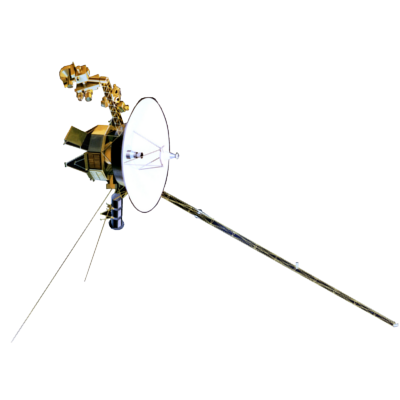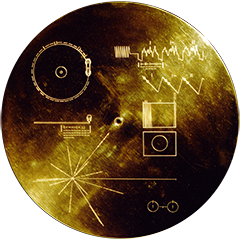Voyager LECP Data Analysis Handbook
Data File Descriptions
Experiment Data Record (EDR) Format Specification
(From Document 618-306, Revision D)
The LECP EDR science record is designed to a 48-second instrument measurement period. Any data not present during the instrument measurement will be filled with binary zeroes.
A logical record corresponds to an instrument measurement period and in this instance is also the science physical record structure. The formats which follow are separated into two types. Type One is applicable to the instrument Far Encounter and Cruise operating mode. Type Two corresponds to the Near Encounter operating mode. For spacecraft GS, OC, and IM (imbedded GS&E) data modes, the formats are identical with a dependency on the aforementioned instrument operating modes.
The science logical/physical record structure is diagrammed in Figure 3.3-1. The physical magnetic tape lay-out includes a change in decommutation maps during the time period covered by that EDR tape (hopefully an infrequently occurring event). Figure 3.3-3 and Table 3.3-1 describe the structure and contents of the LECP science record subheader for all acceptable S/C data modes. Figures 3.3-5 and 3.3-6 and Table 3.3-2 define the science record data block structure and contents for the Far Encounter instrument operating mode. Figures 3.3-5 and 3.3-7 and Table 3.3-3 define the science record data block structure and contents for the Near Encounter instrument operating mode.
Appendix A contains the Decommutation Map Record format. Appendix B describes the Engineering Record format. Appendix C depicts the Record Header which will be Standard on all the physical records written to the LECP EDR tape.
Note: The Near Encounter instrument status is NOT copied into the subheader from the science data block.
Return to EDR main page.
Return to Data File Descriptions main page.
Return to Voyager
LECP Data Analysis Handbook Table of Contents.
Return to Fundamental
Technologies Home Page.
Updated 8/9/19, Cameron Crane
VOYAGER 1 ELAPSED TIME
*Since official launch
September 5, 1977, 12:56:00:00 UTC
VOYAGER 2 ELAPSED TIME
*Since official launch
August 20, 1977, 14:29:00:00 UTC
QUICK FACTS
Mission Duration: 40+ years have elapsed for both Voyager 1 and Voyager 2 (both are ongoing).
Destination: Their original destinations were Saturn and Jupiter. Their current destination is interstellar space.



